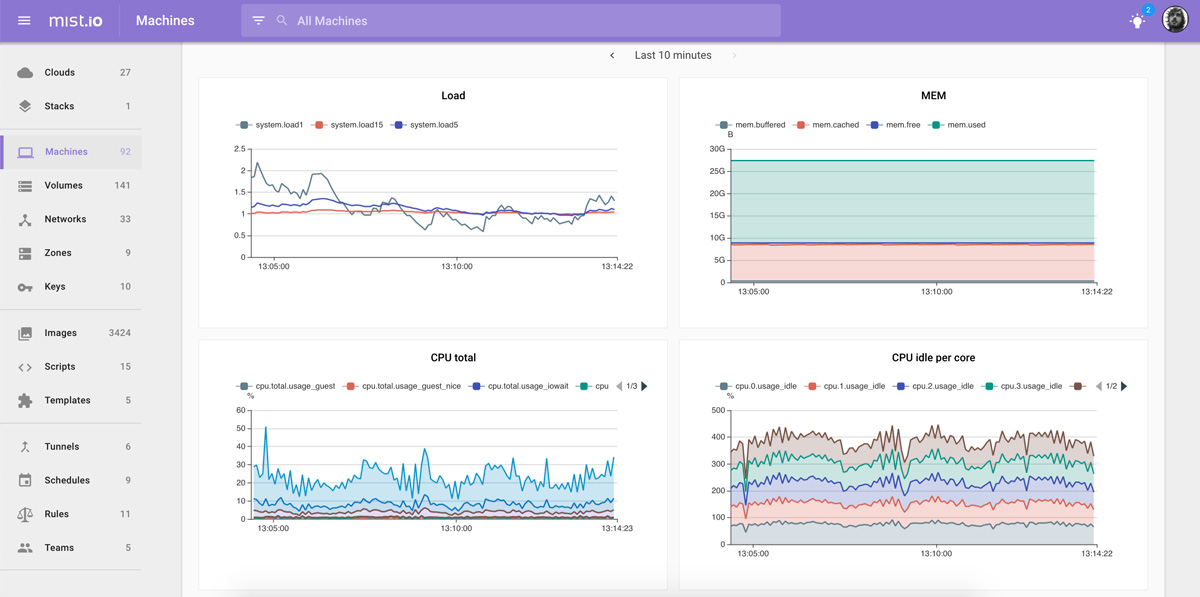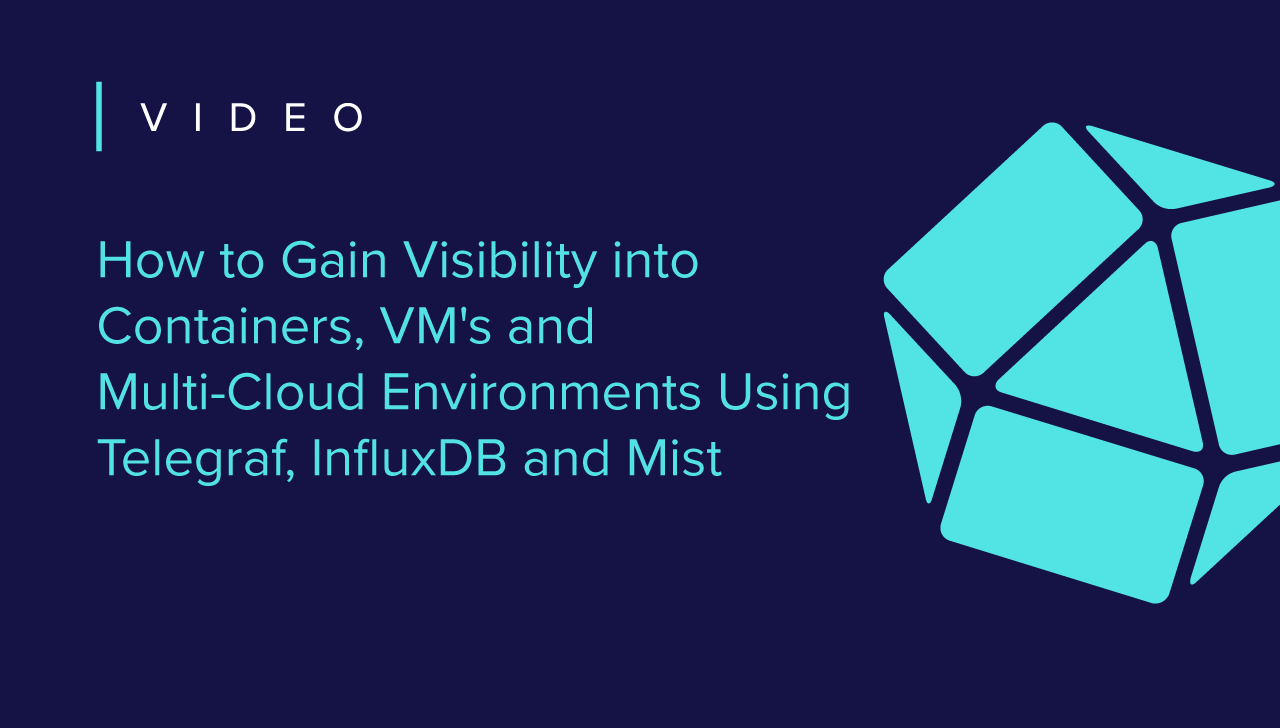
Mist.io
Mist is an open source multi-cloud management platform. It supports all popular infrastructure technologies including public clouds, private clouds, hypervisors, containers and bare metal servers. Mist provides a unified interface for performing common management tasks like provisioning, orchestration, monitoring, automation and cost analysis.
Multi-cloud management simplified
InfluxDB and Mist
Mist integrates with Telegraf and InfluxDB in order to pull monitoring metrics inside its management platform. Now users can have a single pane of glass from where they can make informed decisions about their infrastructure and act accordingly. It comes with a RESTful API so you can easily integrate it in your existing workflows.
Mist chose to build on Telegraf and InfluxDB for the following reasons:
- Real open source. The Mist.io team can hack and redistribute without headaches, in contrast to code-available alternatives.
- Mature and well-understood products. InfluxData technologies are robust and well-documented, making them easy to integrate with.
- Big and vibrant ecosystem. There are lots of integrations with 3rd party tools that make it easier to expand Mist's platform.
- Wide user base. Mist's users don't have to learn and maintain yet another tool. They are familiar with Telegraf and InfluxDB and are already using them internally.
Bottom line, Mist chose Telegraf and InfluxDB because they help solve problems instead of introducing new ones. This way, everyone can move faster.
How to use InfluxDB with Mist
To get Mist and InfluxDB running, follow these installation instructions.
Steps:
- First, get the latest
docker compose yaml.wget https://github.com/mistio/mist-ce/releases/download/latest/docker-compose.yml
- Make sure you're inside the directory containing the
docker-compose.ymlfile and do:docker-compose up -d
- This will start all the mist docker containers in the background.
- To create a user for the first time, first run:
docker-compose exec api sh
- This should drop you in a shell into one of the mist containers. In there, run (replace the email address with yours):
./bin/adduser --admin [email protected]
- Mist binds on port 80 of the host. Visit
http://localhostand login with the email and password specified above. - Welcome to Mist! Enjoy!

Key resources
- Webinar: How to Gain Visibility into Containers, VM's and Multi-Cloud Environments Using Telegraf, InfluxDB and Mist
- Presentation: How to Gain Visibility into Containers, VM's and Multi-Cloud Environments Using Telegraf, InfluxDB and Mist
- Blog: On MultiCloud Management. Q&A with Chris Psaltis
Integration details
Mist users can deploy Telegraf to their VMs with a single click. This is done over SSH and an upstream, unmodified version of Telegraf is used. In cases where Mist doesn’t have SSH access to the target machine, the user can deploy the agent manually and configure it to send data to Mist.
Once Telegraf starts sending data, these go through a pre-processing layer that Mist has developed on top of InfluxDB Relay which is called Gocky. Gocky also handles mirroring of data in different storage backends and the collections of metering information, e.g. how many metrics were emitted from machine A.
All time series data is then stored in InfluxDB. At this point, users are able to view monitoring graphs in Mist’s web UI.

Finally, Mist has developed a service called Cilia that continuously queries InfluxDB and Elasticsearch for time series and log data respectively. It then evaluates rules the user has set and triggers actions. Such actions include hitting webhooks, email alerts, execution of custom scripts and machine actions like reboot.

How to Gain Visibility into Containers, VM’s and Multi-Cloud Environments Using Telegraf, InfluxDB and Mist
This webinar dives into Mist’s approach to improving visibility and explains how a time series database is used to monitor infrastructures.Mist.io Testimonial
In this testimonial video, Mist.io co-founder and CEO Chris Psaltis explains why and how they use InfluxDB in their solution.What's next?
Questions? Get Answers
